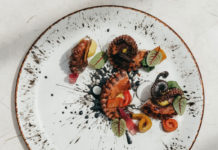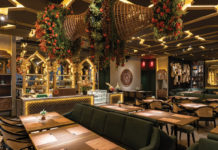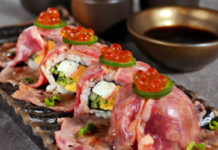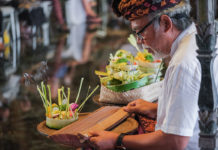Many of you will celebrate New Year’s Eve with a family dinner, champagne and dancing with friends, or by kissing your loved ones when the clock strikes midnight. But what about the rest of the world and its traditions?
In many places people stay up late to usher the old year out and the New Year in. Almost everywhere in the world church bells ring, horns toot, whistles blow, sirens shriek and most tend to have the standard fireworks display. London’s Trafalgar Square and New York City’s Times Square swarm with crowds of happy, noisy people. The hullabaloo expresses people’s high spirits at holiday time. But these countries have very unique traditions for celebrating New Year’s Eve.
- In Japan priests and others ring purification bells 108 times to observe the Buddhist tradition of banishing the 108 evil desires to which people are prone. In accordance with the country’s Shinto faith, traditional foods are served as offerings to welcome Toshigami, who represent both the ancestors and the deities of the harvest and the New Year. It’s also important to clean the house and to resolve conflicts from the past year, so that you can start the New Year with a clean slate.
- In Greece it’s believed that hanging an onion, or “kremmida”, on your door on New Year’s Eve is a symbol of rebirth in the coming year. The following morning, parents traditionally tap their children on the head with the kremmida to wake them up before church. Greeks also commonly break a pomegranate on their doorstep before entering their houses on New Year’s Day, another symbol of prosperity and good luck.
- Argentinians believe that eating beans before the clock strikes midnight means they will have good fortune in their careers in the year ahead. Some also believe that if they carry a suitcase around their house, they will travel more in the year to come.
- Thousands of life-size dummies representing misfortunes from the past year are burned in the streets of Ecuador. These figures are made from newspapers and pieces of wood and at midnight everyone gathers outside their homes to burn them together. Some of these dummies are stuffed with firecrackers and Chinese rockets. Also, the faces are masks representing residents of the city.
- Meanwhile, in the Philippines, people will dress up in polka-dots or display round fruits on the dining table because roundness or the round shape signifies prosperity. All doors must be left wide open to allow good luck to enter right before the clock strikes midnight at the start of the New Year.
- Spaniards eat 12 grapes. A grape is eaten at every stroke of the clock as it strikes 12 on New Year’s Eve. Each grape signifies one month and the Spanish believe that it will bring good luck and prosperity throughout the year.
- In Brazil, the tradition of wearing white clothing is meant to bring good luck for the upcoming year. This is often accompanied by a trip to the beach to throw flowers in the sea while making a wish.
- New Year’s Day in Ireland, which is also known as the Day of the Buttered Bread in Gaelic, is traditionally marked by banging loaves of bread on doors and walls to chase the bad luck out of a house and to invite good spirits in.
Celebrating global diversities, ring out the old and ring in the new with a New Year tradition or two!





















